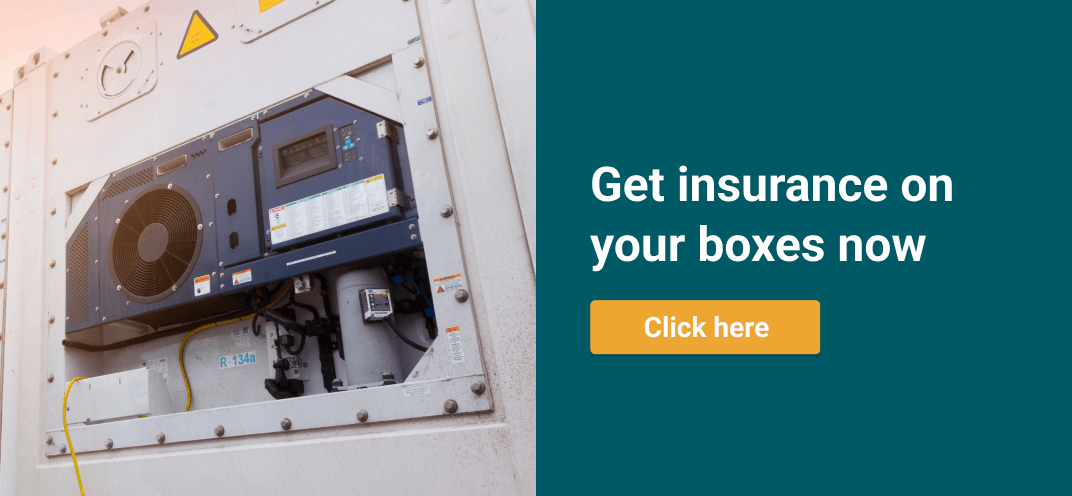No matter how hard you try, you can’t protect your reefer containers from extreme weather or accidents. Bad things happen, and when they do, it’s important to have the right insurance. We’ll help you get the perfect protection for your boxes, as well as covering all there is to know about reefer container maintenance.
Picture the scene: your reefer arrives back from a shipment dented, scratched or damaged, and you have no idea what happened. Or one of your containers mysteriously disappears, and can’t be tracked down.
It’s somehow vanished into thin air. Now you have to fork out large amounts of cash to buy a new container, or repair damages. What a nightmare! When these unpleasant events happen, Container xChange is your go-to solution.
We’re a transparent and neutral marketplace for buying, selling and leasing shipping containers.
On our platform, it’s easy and convenient to manage your entire container workflow process, without switching between accounts once. From searching for boxes and striking deals with partners, to payments and container tracking, you can do it all on xChange.
Want to insure your boxes or top up your existing cover? It’s simple and quick, as long as you’re a member.
Protect your reefers with xChange today. Sign up for a free demo to get started. 👇
Reefer container maintenance: Why is it necessary?
Everything needs maintenance, from cars and ships, to roads and buildings. Reefers are no exception. With their expensive and intricate cooling equipment, upkeep is even more important than for other kinds of containers.
Reefers have a very important job. They transport temperature-sensitive goods, without breaking the cold chain once. They’re responsible for getting fruit, ice cream, ice, dairy products and medication to stores and markets fresh.
Reefers are expensive to run, as well as to maintain. However, they’re a lot more expensive to fix if damaged or malfunctioning. Plus, the consequences for a broken reefer can be far-reaching.
If a reefer container’s cooling equipment is not working correctly, temperatures inside the container will fluctuate. This can cause items to spoil, thaw, rot or melt, costing shippers tons of money in lost produce.
Maintaining your reefers will ensure that they work optimally, for as long as possible. Don’t wait until your boxes are desperate for a face-life. Instead, perform regular checks and repairs to keep them in ship-shape (pun-intended).
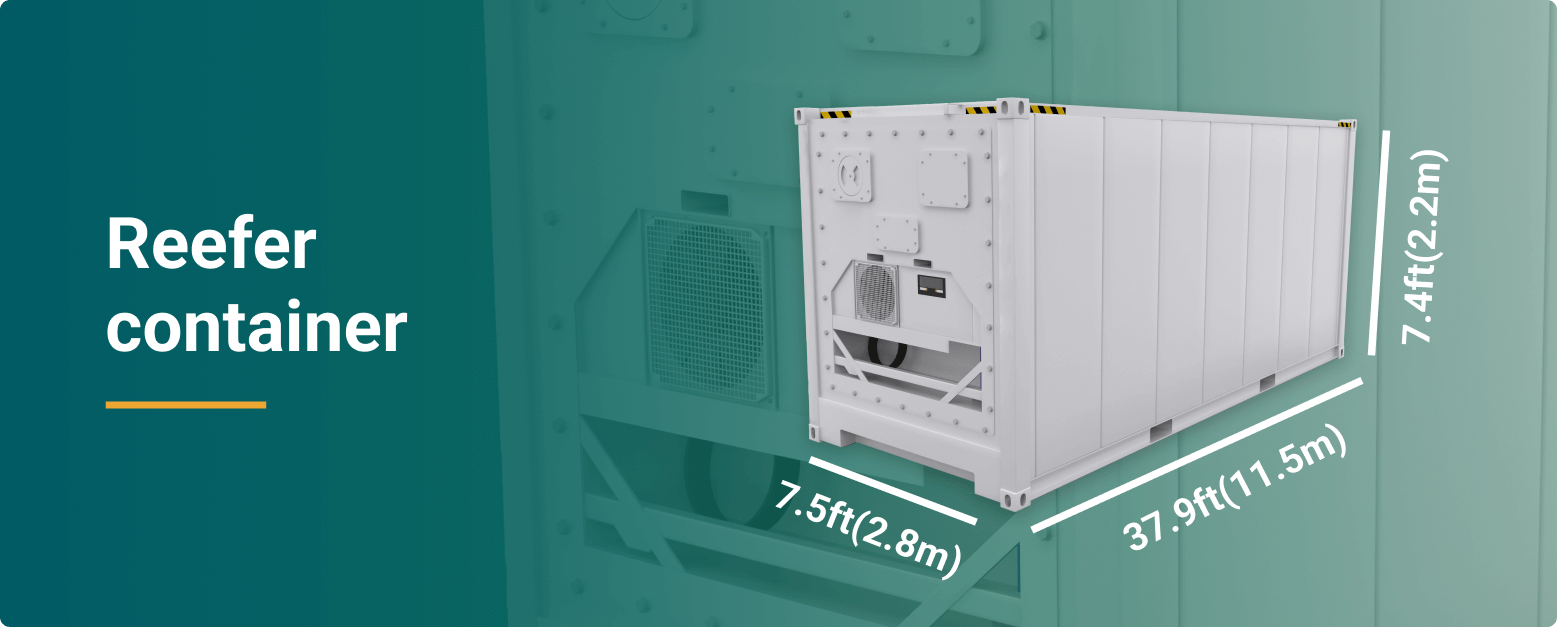
If you’re curious about how refrigerated boxes work, check out this blog for more information.
Reefer container maintenance: Why do containers get damaged?
It’s important to be aware of the reasons containers get damaged. So buckle up, and let’s learn about different kinds of container damage.
| Type of damage | How does it happen? |
| Material overstressing | This causes containers to fold or bend, especially during the stacking and stowing process. |
| Wrong container for specific cargo | If cargo is too heavy or doesn’t fit well inside a container, walls and floors can buckle or get dented. Uneven distribution of weight can also cause damage. |
| Inexperienced fork lifters | If fork lifters aren’t experienced enough, containers can be damaged during the loading and unloading process. |
| Extreme weather conditions | Bad weather at sea or on land can cause rust, corrosion, and paint damage to container bodies. |
| Contamination | Containers can become contaminated by chemicals or toxic substances. Contamination can also happen if the cooling system in a reefer is faulty and food rots, leaving strong odors in the box. |
Now, let’s have a look at the most common container repairs.
6 common kinds of reefer container maintenance and repairs
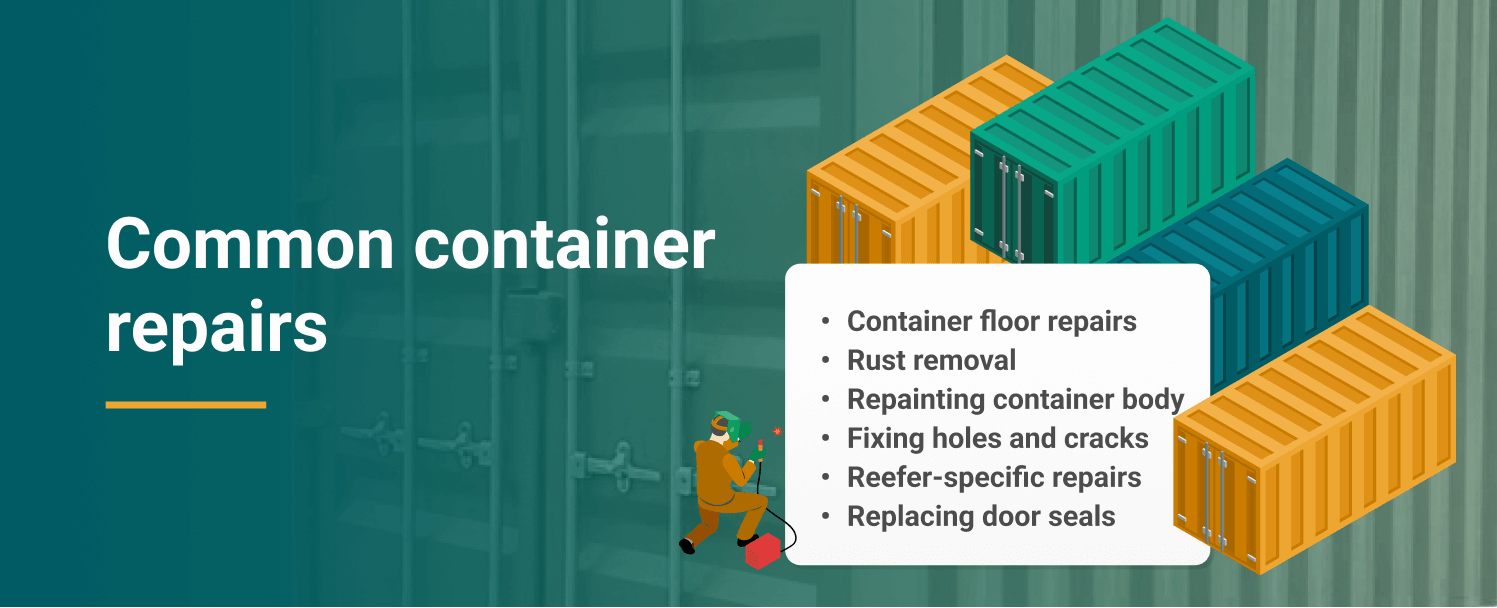
Container floor repairs
Container floors are usually plywood, which wears down over time. This happens because of the constant loading and unloading of goods. Floors get scratched, scraped, gouged and dented on a regular basis. Constant pressure due to heavy items can cause floors to crack or become uneven. If any obvious cracks become visible, replace the floors immediately. Regular inspections can help to detect sneaky cracks before they become a major issue.
Rust removal
Shipping containers are prone to rust, as they’re constantly exposed to harsh elements. Rust can lead to holes in the container walls. A very common container repair is rust removal. For surface level rust, sandblasting will do the job. If the rust is underneath the paint, it will need to be cut out and welded with a new piece of steel.
Repainting the container body
Paint a special coat onto your container’s surface to protect the body. Bear in mind that you’ll need to reapply this layer regularly, as it loses its effectiveness over time. Even a small dent can cause the paint to start to chip away, leaving walls vulnerable to rust and holes.
Fixing holes and cracks
Holes and cracks allow bugs and rodents, as well as the elements into your box. We’re guessing no one wants rats chewing their precious cargo, right? Try to identify and repair holes and cracks as soon as you notice them.
Reefer-specific repairs
Make sure that all door seals are effective on your reefer, otherwise cold air can seep out. Refrigeration units must also be inspected regularly. This will reduce the running costs and ensure that everything is working optimally.
Reefers are often used to transport food items, and because of this, are vulnerable to pests. Make sure your reefer gets fumigated as part of the repair process.
Again, make sure there are no holes or areas of rust on your reefer, as this could allow cold air to escape and pests to sneak inside.
Replacing door seals
Door seals keep containers airtight or watertight (depending on the container). These seals are made of rubber, which disintegrates over time. Remember to replace the door seals when they start to look worn.
Reefer container maintenance: Keeping your reefers in tip top shape
- Clean the reefer coils monthly by either hosing or air cleaning.
- Clean circulating fans regularly to make sure there’s continuous circulation inside the box.
- Defrost reefers regularly. To remove ice on the evaporator coil, put on a defrost cycle at 9-hour intervals. For chilled cargo with closed ventilation, the defrost cycle is 12 hours. For chilled cargo with open ventilation, the defrost cycle is 6 hours.
- Check digital readouts like thermostats and temperature sensors to ensure the unit is operating at the correct temperature at all times.
- Always connect your box to a 32amp, 415v power outlet.
- Load the reefer at the correct temperatures to ensure cargo remains fresh.
Insuring your reefer container for damage or loss
Container damage can’t always be avoided. Whilst weather, accidents and depreciation over time may not be in your control, some things are. You can choose to protect your boxes and your wallet with the right type of insurance plan for your needs.
As a member of Container xChange, you have the option to add Damage Protection, Total Loss Insurance or Premium Cover onto your membership in just a few clicks. Yup, it really is that simple!
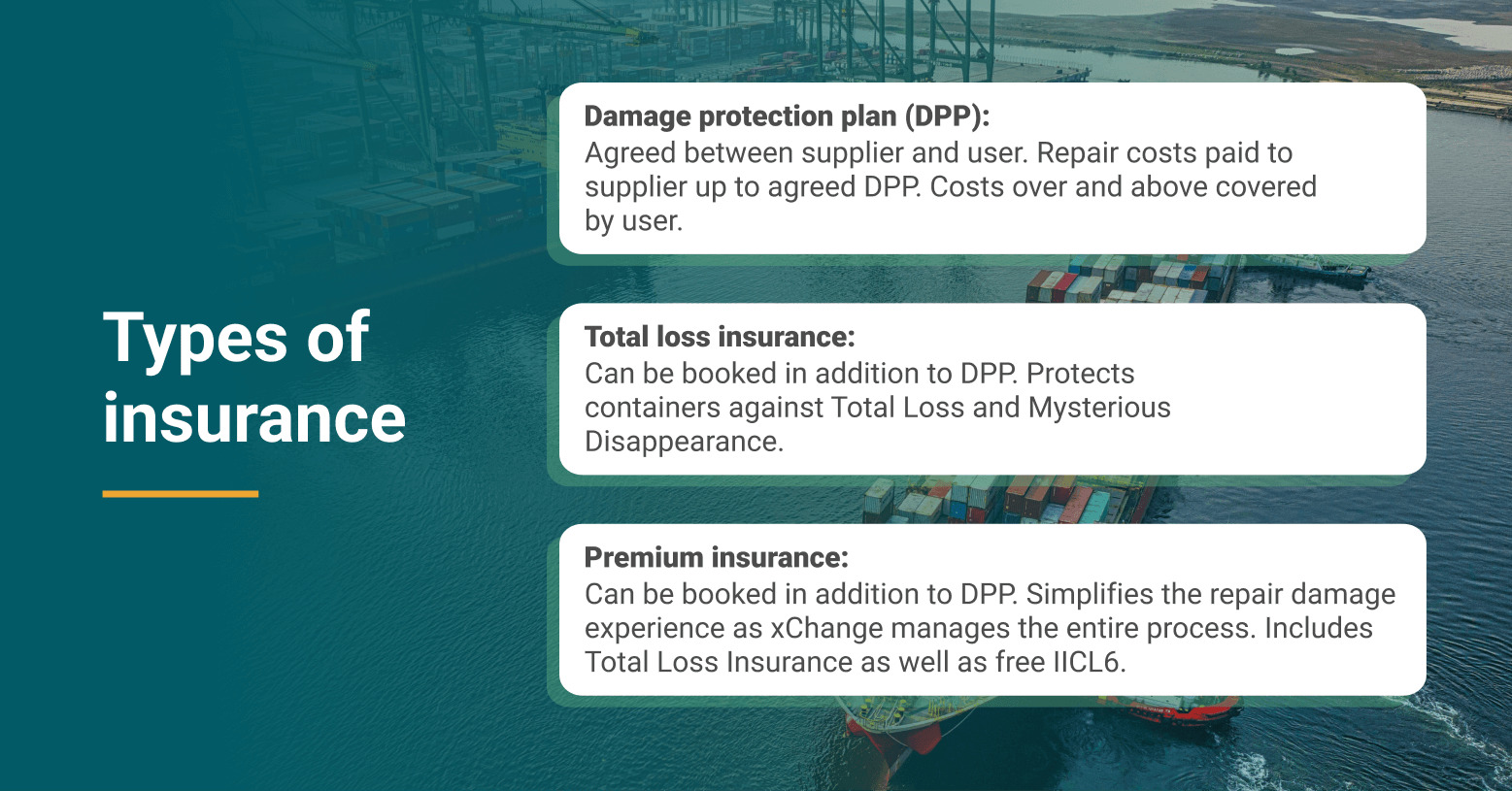
Damage Protection Plan (DPP)
Having nightmares about damaged containers emptying your pockets? xChange offers damage protection, which helps you compensate for routine maintenance and repairs. DPPs are paid by the supplier. If you opt for insurance, this will cover anything over and above the DPP.
This plan is helpful if you don’t want to do a damage assessment whenever something happens to one of your boxes. It saves you valuable time, so that you can focus on more pressing issues like tracking your containers or striking new deals.
Read more about container insurance in this blog.
Total loss insurance
Sometimes, containers disappear into thin air. It’s frustrating, but true. Containers also fall off ships, or sink along with them. In an unfortunate case like this, it’s important to have Total Loss and Mysterious Disappearance cover. This cover can be taken out in addition to DPP on the xChange platform.
Read more about Total Loss Insurance here.
Premium insurance
If you really want to cover all of your bases, premium cover is for you. This can also be taken out in addition to DPP, and significantly simplifies the repair process.
The package includes Total Loss Insurance, as well as free IICL6 – an inspection of your containers. Total Loss Insurance protects your containers from all kinds of damages, refunding you to the insured amount.
Read more about container damage in this separate blog post.
Reefer container maintenance and repair cover
Besides insurance for damages and total loss, you can also get Maintenance and Repair (M&R) cover for your boxes.
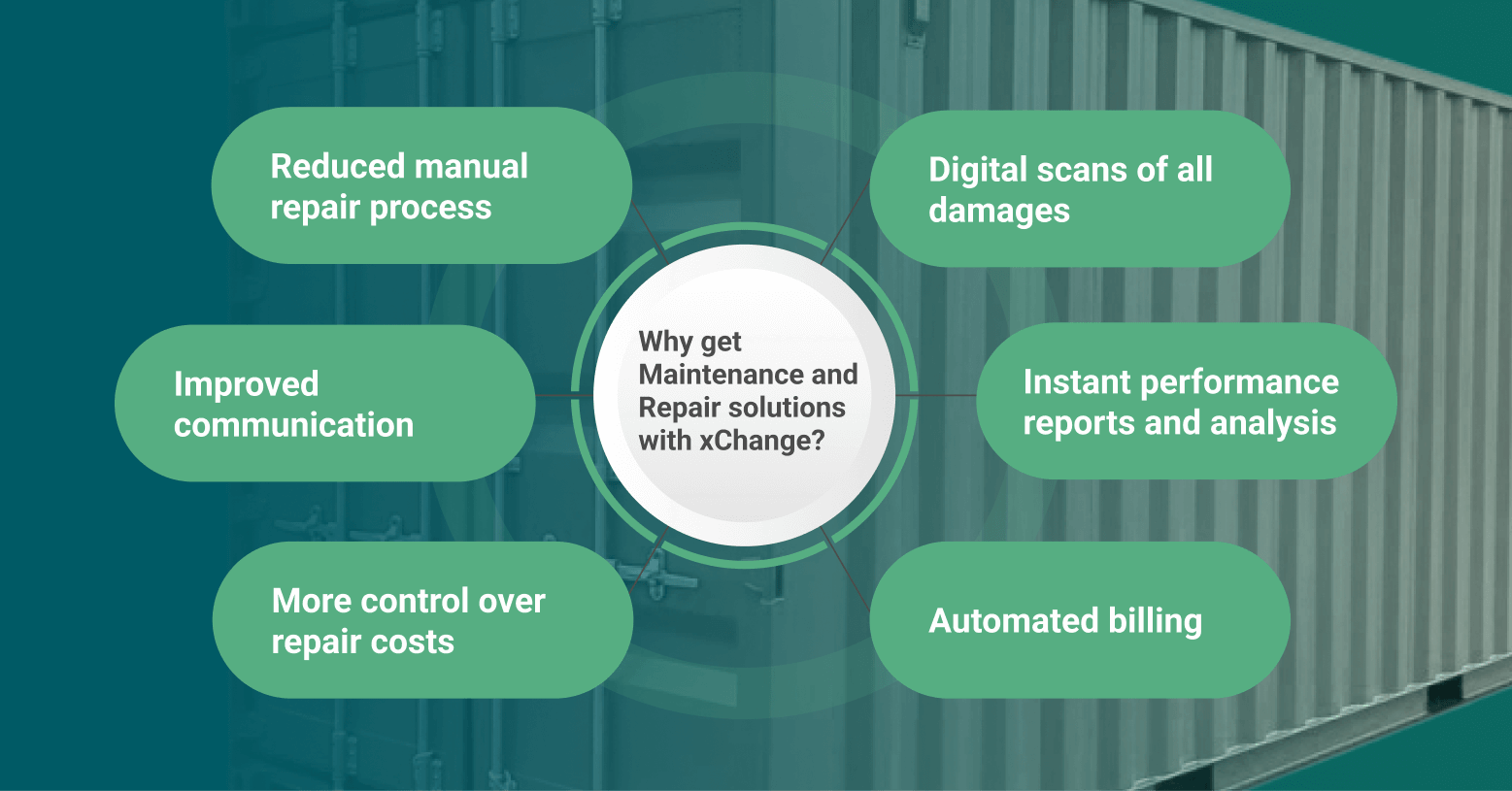
Here are some of the major benefits of this cover:
Maintenance and repair is unavoidable, so why not have insurance to lighten your load? Often, shipping companies end up covering repair costs, when damages aren’t even their fault. Instead of playing the blame game, it’s best to avoid issues like this altogether, right?
The Maintenance and Repair platform streamlines and automates the entire process for you. This integrated system allows you to supervise the entire repair and maintenance process, and reduce the costs overall.
The M&R software allows you to get a close up and accurate look at damaged portions of your containers, without actually having to be on-site. It also cuts the downtime of the box, and tracks the repair process in real time. Imagine managing the entire maintenance and repair process from the comfort of your office? It doesn’t get more efficient than that!
Pre-trip inspection: A must for reefer container maintenance
Pre-trip inspections are important. So make sure you know what to expect.
A pre-trip inspection is done on an empty container, before it’s loaded with cargo. This must take place before a container leaves the port. It’s important to note that this is not an official, technical test for a certificate. It simply checks whether the container is in a good condition, and doesn’t need any repair work done before shipping goods.
Pre-trip inspection of a reefer container includes:
- Cleaning (dirt and odor removal).
- Inspection of container interior (to make sure it meets food-grade criteria).
- Checking of all machinery such as cooling equipment.
- Checking door seals and locks are in a good condition.
After the inspection, the time and date, as well as the inspector’s name are documented and attached to the container’s label.
Learn more about container inspections in this separate blog post.
Your reefer container maintenance solution: Secure boxes on xChange
After reading about total loss, damages and repairs, we’re certain you’re going to want to invest in some cover on those precious boxes.
With xChange, starting this process couldn’t be easier. As a member on our platform, adding insurance to your membership can be done in just a few clicks. So all you need to do is decide which plan best suits your needs. Need help choosing? Our team of experts would be happy to help you out. We offer support 24/7, so feel free to reach out anytime.
Claiming for repairs and damages with xChange is simple, quick and streamlined, so you no longer have to waste time on phone calls and emails, trying to track your cases.
Are you ready for peace of mind? Click below to start protecting your boxes today. 👇
Why is regular maintenance of reefer containers important?
Regular maintenance of reefer containers is important in order to prevent failures in the cooling system. Keeping refrigerated containers in good condition will allow them to perform optimally. Unwanted temperature fluctuations due to issues with the cooling equipment can cause temperature-sensitive items to thaw, rot or spoil.
Do you need to repair your reefer container?
You need to repair your reefer container if you see any obvious damage to the container body, or if an alarm or warning light signals an issue with the cooling system. It’s best to sort out any issues as soon as they occur, to prevent temperature fluctuations whilst transporting sensitive items. You should also inspect your reefers often, checking for rust, holes, contamination and door seal damage.




